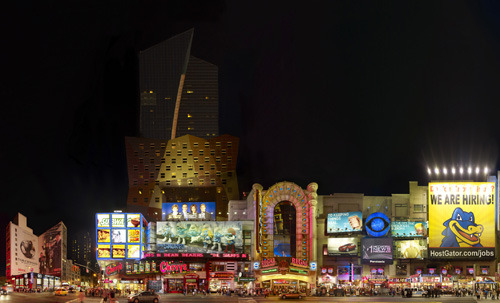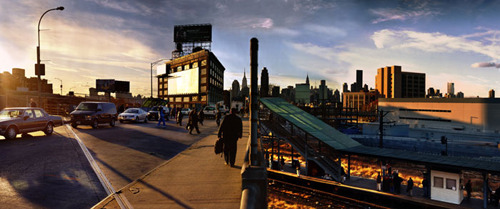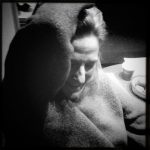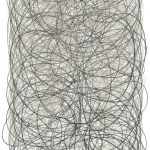Con Edison Immigrant Artist Program Newsletter, Issue No. 33
Featured Artist: Jeff Chien-Hsing Liao
Jeff Chien-Hsing Liao is a photographer who grew up in Taiwan, attended highschool in Canada, and finally arrived in New York City to complete his undergraduate degree at Pratt and his MFA at the School of Visual Arts. For his MFA thesis entitled “Habitat 7”, Liao photographed communities around the IRT 7 train in Queens using a large format camera to capture enhanced detail and depth. His work studied the most ethnically diverse borough in America bringing prominence to its unparalleled cultural richness. “Habitat 7” earned him wide critical acclaim and was featured at numerous institutions including the Queens Museum of Art, the Harvard Business School, and the Getty Museum.
Most recently Jeff has received commissions from the Bronx Museum and The Museum of New York City to further his documentation of New York City. NYFA’s IAP Team Pamela Hernandez and Dennis Han interviewed Liao about his meticulous process and philosophy as well as his current projects.
IAP: Your photography captures a rich and descriptive point of view on your subject. Can you explain the process you undergo such as: What influences you to choose a specific theme and/or subject?
JL: My work reveals a level of detail that requires a new realm of existence which only large negatives, like those of an 8×10 view camera, can offer. Also, the relationship in scale and viewpoint with my subject is important as it affects the attitude of the viewer. In my work, it’s important that the subject matters do not confront the viewer so that the viewer is allowed to freely survey the landscapes.
I come from a documentary and large format photography background. The clarity and objectivity of the works of Bernd and Hilla Becher’s German industrialized architecture influence my images. The apparent objectivity of the Bechers’ art is the expression of a highly personal sensibility, which works on the extremes of photographic aesthetics. However, traditional documentary form no longer satisfies my sensibility of image. In the age of digitalization, new technology provides the capability to produce over-sized prints, and digital manipulation allows the photographer to move closer to his vision than ever before. Despite the elements of manipulation in my work, however, the conditions of my photographic perception still lead me to work in a documentary manner like Andreas Gursky. A Becher school photographer, he applies digital manipulation liberally, though also discreetly. I believe that the aspect of digital function can be a useful tool for an artist to achieve his aesthetic goal.
The scale of my subject matter requires me to depart from the basic characteristics of photography as direct visual recording. I decide to create the image as a painter who has more editorial freedom in constructing the imagery. All my images were composed in Photoshop from several different negatives. During the shooting, I try to capture the essence of the visual elements over a period of time. After digitalizing all the parts from the shooting, I reconstruct the elements in the computer. By joining the pieces together in post-production, I am able to best represent the atmosphere of the time, and to give sweeping yet specific representation of the environment.
IAP: How do you develop and modify each image and how long does it take to completion?
JL: Each image required scouting and planning, and I only make one image a day. Every image takes about 2 weeks (8-10 hrs a day) Photoshop time to completion.
IAP: Your critically acclaimed work “Habitat 7” captures beautifully descriptive images of settlement along the IRT 7 Train in Queens. Can you speak about what inspired you to document this landscape and what narrative you relay with this project?
JL: Though we now live in an industrial and technological era, where the survival of our existence no longer simply depends on the availability of food, the pattern of our quest for living space still resembles that of the ancient river valley civilizations. Such is the premise of the 7 Train, the seven-mile-long subway line that connects New York City’s Times Square with seven communities in northwest Queens, the most ethnically diverse borough in the country.
On a smaller but equally complex scale, some of the distinctive characteristics of a civilization – an intricate and highly organized society with the development of elaborate forms of economic exchange, as well as the establishment of sophisticated, formal social institutions such as organized religion, education, and the arts -are evident in the communities that have developed along the tracks of the 7 Train.
While I’ve been living along these tracks for years, I am still constantly awed by the complexity of the communities formed alongside it as well as the harmony so many people of distinct backgrounds are able to live in. I set out to photograph the ‘habitat’ of the 7 Train as I came to see it, with a focus on not the individual but the people as a whole, as well as their relationship with their environment.
IAP: What are you working on now in your artistic practice?
JL: My book Coney Island will be published by Nazraeli press this year. I am working with the Museum of the City of New York for a project in Staten Island. I am also working on a long term project about Manhattan that has been going on since last year.


IAP: What advice would you give to up and coming foreign-born artists who have just landed in New York? Can you speak on the specific path that you took to gain some footing in the art field?
JL: New York City has tremendous opportunities for artists but they can seem overwhelming to navigate. I would say persistence is important. If you know what you want in New York City, work hard and don’t look back.
For me personally, when I was in school, I started out spending a lot of time doing internships. Through internships I was able to open up my network and gain a good understanding of how the art industry works.





